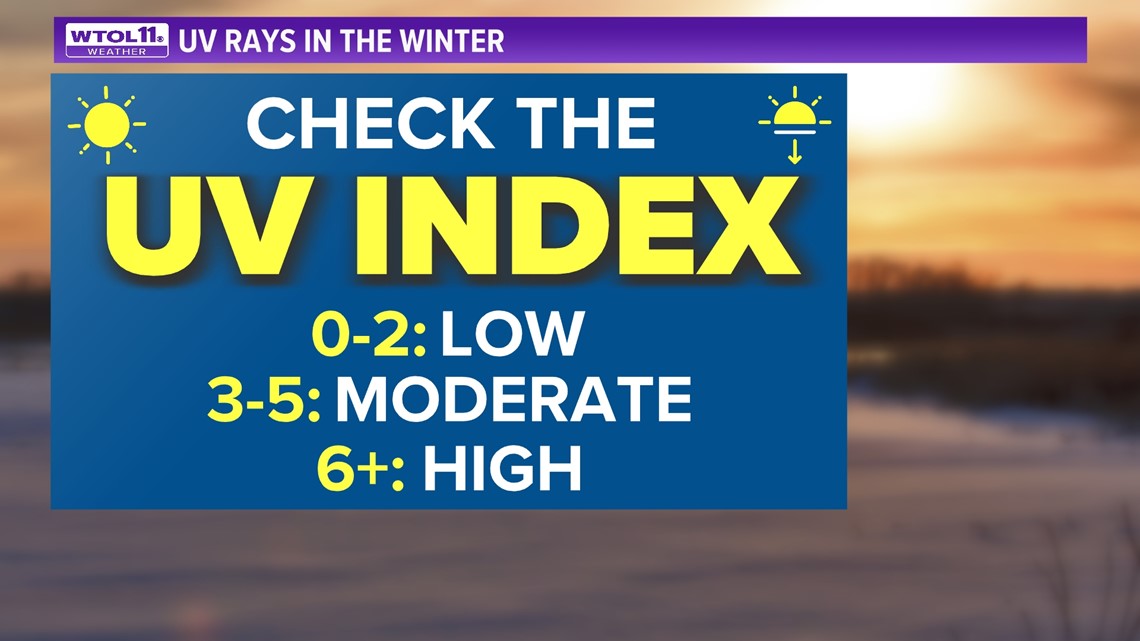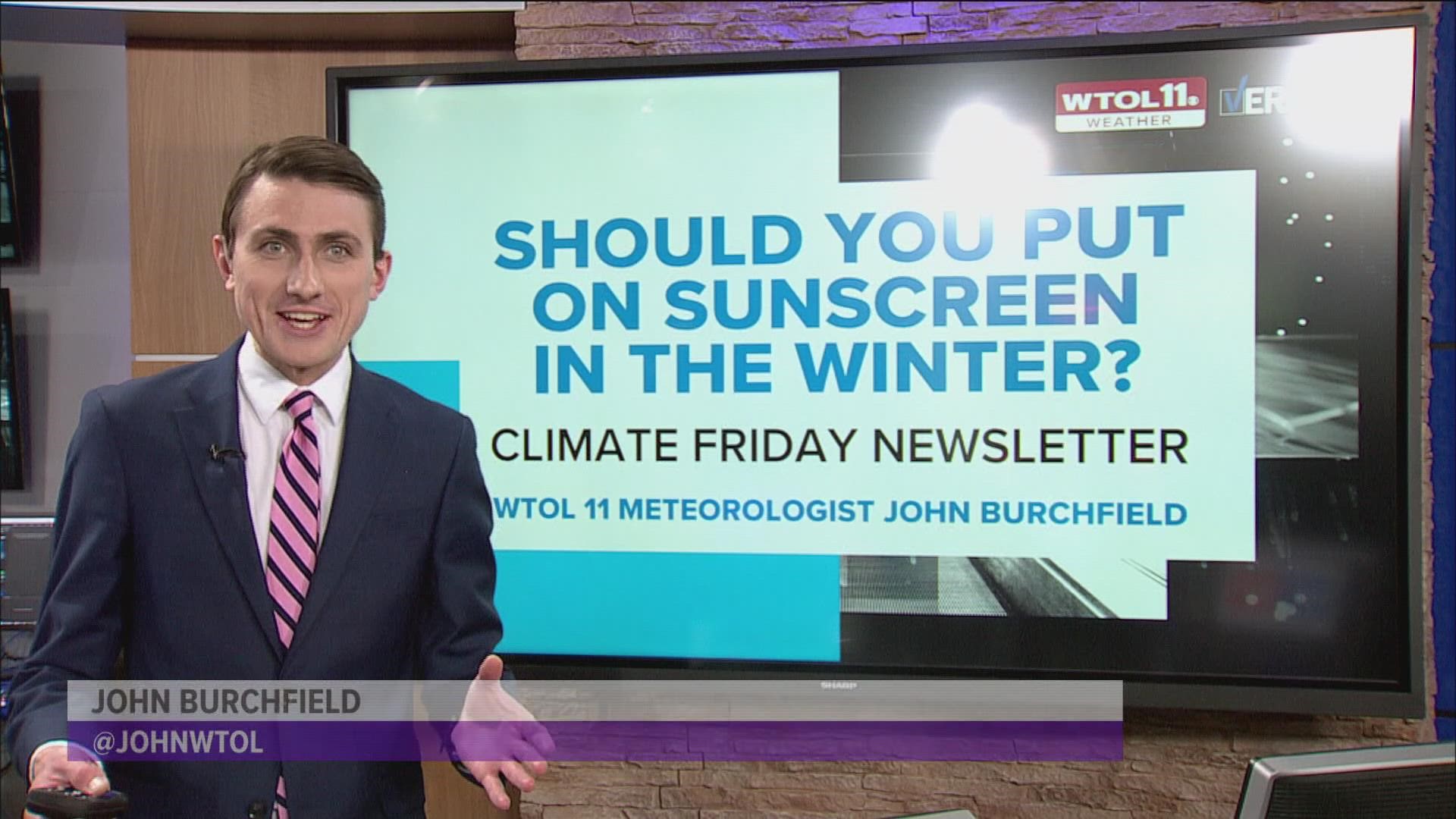TOLEDO, Ohio — November is well underway, but these past few days have felt more like summer.
Recent temperatures in the 70s have brought a summery feel to northwest Ohio and southeast Michigan. This sunny and mild setting has made for a magnificent stretch of weather.
But can November sunshine cause sunburn, and do you need to put on sunscreen during the winter? Meteorologist John Burchfield verifies this in this week's edition of Climate Friday.
During the winter months, the sun's rays are less direct compared to the summer. Meteorologists quantify this difference using sun angle. The sun angle is higher during the summer when the sun's rays are more direct.
During summer solstice in late June, the sun angle peaks at 72 degrees as Earth's orbit directly exposes the Midwest to the sun's rays. During spring and fall equinox, the sun angle drops to 46 and 48 degrees, respectively. By wintertime, the sun angle falls down to 25 degrees, indicating the less direct sunlight of the winter.


The greater the sun angle, the higher the risk of sunburn. However, even the lower sun angle of winter can cause sunburn on unprotected skin. During the winter months, you can still get burned in less than an hour.
UV index represents the risk of sunburn, taking into account the sun angle and season. Even with a low UV index of 0-2, sunburn is possible in around an hour. Dermatologists still recommend wearing SPF 30 or higher sunscreen with a low UV index.
The UV index often drops below 2 during the winter months as the sun's rays become more diffuse and less direct. A moderate UV index of 3-5 is more common in the spring and fall.
During the hours of 10 a.m. to 4 a.m., the sun's rays are more powerful and can increase risk of sunburn in a half-hour. A UV index of 6 or higher is considered high, greatly increasing the risk of a damaging sunburn. When the UV index reaches these high levels, sunburn is possible in just 15 minutes.
Seek shade from 10 a.m. to 4 p.m. and put on sunscreen frequently. It's particularly important to reapply sunscreen every hour if you're outside exercising. Profuse sweating washes off sunscreen and reduces it's effectiveness.
Reapply sunscreen and find shade to reduce sunburn risk.
Even though the sun's rays are less direct in the winter, they can be amplified by the reflective properties of snow. Fresh snow is among the most highly reflective materials on the planet, reflecting over 90% of sunlight.


Fresh snowfall reflects light like a mirror, and the sun's rays can bounce back in your face and eyes. You're more susceptible to sunburn on winter days with fresh snowpack.
Reapply sunscreen if you're out in the snow sledding, walking, skiing, or just driving to work. While snow reflects sunlight and increases sunburn risk, clouds filter sunlight and decrease the risk. Even with a lower risk, sunburn is still possible on cloudy days.
Enough UV rays make it through the clouds to cause sunburn. Even though it takes longer, sunburn on cloudy days can be just as harmful. Apply sunscreen on exposed skin on cloudy days.
So yes, we can verify that you should wear sunscreen during all four seasons. Dermatologists recommend applying sunblock even during the colder months of fall and winter.
Be extra diligent about putting on sunscreen on snowy days. Even though you'll see much cooler temperatures coming up in the WTOL 11 weather forecast, sun exposure can still cause burning and increase the risk of health conditions.
RELATED VIDEO

